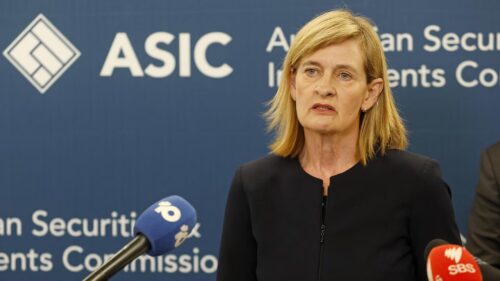

Australia’s superannuation system garners praise as one of the strongest retirement frameworks in the world, backed by compulsory employer contributions and a rapidly growing $4.3 trillion pool of assets. It plays a crucial role in securing the financial futures of millions of Australians. Yet, behind this success story lies a growing sense of unease. Recent collapses, allegations of mismanagement and weak oversight have raised serious concerns about investor protection. The failures of the Shield Master Fund and First Guardian Master Fund highlight growing regulatory risks and renewed debate over trust, accountability and safeguards in both managed and self-directed funds.

Superannuation is a long-term investment system that allows Australians to build retirement savings throughout their working lives. Valued at $4.3 trillion, it is on track to become the world’s second-largest retirement savings pool. For most Australians, contributions start as soon as they enter the workforce, with a percentage of their salary paid into a super fund. Many people also choose to make additional voluntary contributions up to a cap. There are 5 main types of superannuation funds in Australia. Industry super funds are the most popular, offering low fees while still performing well in the long term. Retail super funds are managed by financial institutions and are often the preferred choice of Australians who want to have direct control over their investments. Corporate super funds are arranged by employers and tailored to different employee groups, offering fewer investment options compared to retail funds. Finally, self-managed super funds (SMSFs) have grown increasingly popular over the past few years. This type of super fund is particularly attractive to those who want to have complete control over their investments, including the type of assets they want to invest in. This is suited for the financially intelligent and those who can commit to the amount of time involved in managing an SMSF.
Although Australia’s superannuation system is among the best in the world, growing concerns remain around regulation and public trust. In particular, the recent collapse of First Guardian and Shield Master Fund has drawn the attention of many investors. Shield Master Fund and First Guardian Master Fund are managed investment schemes, which are funds that hold a diversified range of investments. The Australian Securities and Investments Commission (ASIC) raised concerns about improper management and alleged commissions.
The recent spotlight on Macquarie Group’s financial mismanagement, resulting in a $321 million shortfall affecting superannuation clients, has reignited discourse regarding the inherent structural risks within Australia’s superannuation system. Macquarie Group offered the Shield Master Fund, an investment product with no track record, via its superannuation “wrap” platform. Between 2022 and 2023, approximately 3,000 Macquarie superannuation members poured around A$321 million of their retirement savings into the fund. However, by early 2024, Shield Master Fund had collapsed. The responsible entity, Keystone Asset Management, had halted redemptions and faced liquidation. Many investors chose Shield on the assumption that investments available on Macquarie’s platform were safe; unfortunately, this proved disastrously false. Macquarie’s once pristine brand took a reputational hit as ASIC reports uncovered poor oversight in managing key superannuation products. The incident is a stark reminder that even the most sophisticated institutions are not immune to failure, especially when risk management is less prioritised compared to growth.
While the Shield collapse exposed serious failures in institutional oversight, it also demonstrates a broader truth: risk is present across the superannuation landscape, including in self-managed super funds (SMSFs), where individuals have the autonomy to direct their own investment strategies. SMSF trustees can pursue almost any allowable investment, from property to niche schemes, with minimal intervention, which is appealing for control and flexibility. Many are also drawn to SMSFs for their potential to reduce investment management fees and to access more tailored tax strategies, such as managing capital gains, franking credits and contribution timing. However, this freedom comes with significant risks; there is no institutional gatekeeper to warn against or prevent imprudent bets. Crucially, SMSF investors lack the safety nets available in APRA-regulated funds. If an SMSF trustee makes poor investment decisions or falls victim to a fraudulent scheme, they generally have no access to compensation for losses. This was evident in the notorious Trio Capital fraud, when Trio’s managed funds collapsed, about 5,400 investors in APRA-regulated super funds received a government-backed compensation package, whereas approximately 285 SMSF investors who had invested in the same schemes “lost everything” and were not eligible for any reimbursement. The trade-off is clear: an SMSF provides greater control and potentially lower fees, but it also exposes members to the full brunt of any investment failure or regulatory breach with no external trustee to blame or rescue the fund.
Risk exists across all types of superannuation models. Regardless of whether it is systemic governance failures in corporate platforms or poor decision-making in SMSFs, both carry vulnerabilities that can critically erode Australians’ retirement security.

The collapse of Shield Master Fund and First Guardian are not isolated incidents. Australia has witnessed several monumental superannuation collapses over the last two decades, from Australian Fiduciaries and Dixon Advisory & Superannuation Services recently, to Trio Capital and Storm Financial in the past. Storm Financial collapsed in 2009 after promoting highly leveraged investment strategies, leaving around 14,000 investors with heavy losses. In 2010, Trio Capital was revealed as Australia’s largest superannuation fraud, but it lost more than $180 million due to offshore schemes. In 2014, Australian Fiduciaries was wound up following mismanagement and compliance failures. Recently, Dixon Advisory & Superannuation Services collapsed in 2022 after being fined for giving conflicted financial advice. These cases expose recurring weaknesses in Australia’s superannuation regulations.
Oversight responsibilities within the superannuation system are split between different regulators. While APRA (Australian Prudential Regulation Authority) oversees prudentially regulated superannuation funds (such as industry and retail superannuation funds), managed investment schemes fall under ASIC (Australian Securities and Investments Commission)’s jurisdiction, leaving blind spots where investor protections are weaker. The Shield Master Fund and First Guardian collapse demonstrated how investors often assume that products offered on major platforms are safe. For example, Macquarie carry the same safeguards as APRA-regulated funds, when in reality the protections are substantially lacking.
ASIC’s ongoing investigations and 2024 announcement on superannuation misconduct enforcement priority signals a stronger stance against superannuation mismanagement. Recent events back this up. ASIC is suing Equity Trustees (ASX: EQT) over the $160 million Shield Master Fund collapse, with regulators holding them accountable for losses. ASIC has also fined Mercer Superannuation $7.4 million for misleading ESG claims and taken legal action for alleged greenwashing, warning against the seriousness of superannuation collapse and how funds present themselves to members. Regulators are starting to take greenwashing more seriously, as investors may believe their savings are supporting sustainable investments when in reality funds may be backing fossil fuels or gambling, similarly to Mercer Superannuation. ASIC has also banned Adelaide accountant Jason Richard Poser for stealing $2 million from SMSFs.

Similarly, APRA has increased scrutiny of fund performance tests and governance standards, seeking to create more accountability for institutions. Yet, regulators like ASIC and APRA still face challenges of striking the right balance between maintaining investment flexibility and safeguarding the retirement savings of Australians. Too much regulation could reduce investment choice, stifle innovation, and limit opportunities for higher returns. Too little regulation, however, leaves retirees exposed to unnecessary risks, fraud, and collapses.
The impact of collapses on ordinary Australians is significant. For many Australians, superannuation is their largest financial asset apart from housing, and their only safety net for retirement when they reach old age. Collapses or misconduct can wipe out decades of contributions, if not all their retirement savings, severely undermining retirement security. Most members do not understand complex investment schemes and their disclosure statements and rely heavily on regulators to safeguard their money. As a result, each failure erodes public confidence not only in individual funds but in the system as a whole.
Superannuation plays a significant role in Australia’s retirement system, with trillions of dollars invested on behalf of citizens, but recent collapses bring into light the risks that arise when regulatory safeguards fall short. While ASIC and APRA have increased scrutiny through enforcement actions, greenwashing penalties, and stricter governance standards, significant challenges remain. Investors often assume strong government predictions, which leaves them vulnerable during collapses. Ensuring long-term trust from the people of Australia requires more than enforcement; it demands stricter regulations, oversight, and a balance between innovation and the protection of retirement savings for ordinary Australians.
The CAINZ Digest is published by CAINZ, a student society affiliated with the Faculty of Business at the University of Melbourne. Opinions published are not necessarily those of the publishers, printers or editors. CAINZ and the University of Melbourne do not accept any responsibility for the accuracy of information contained in the publication.